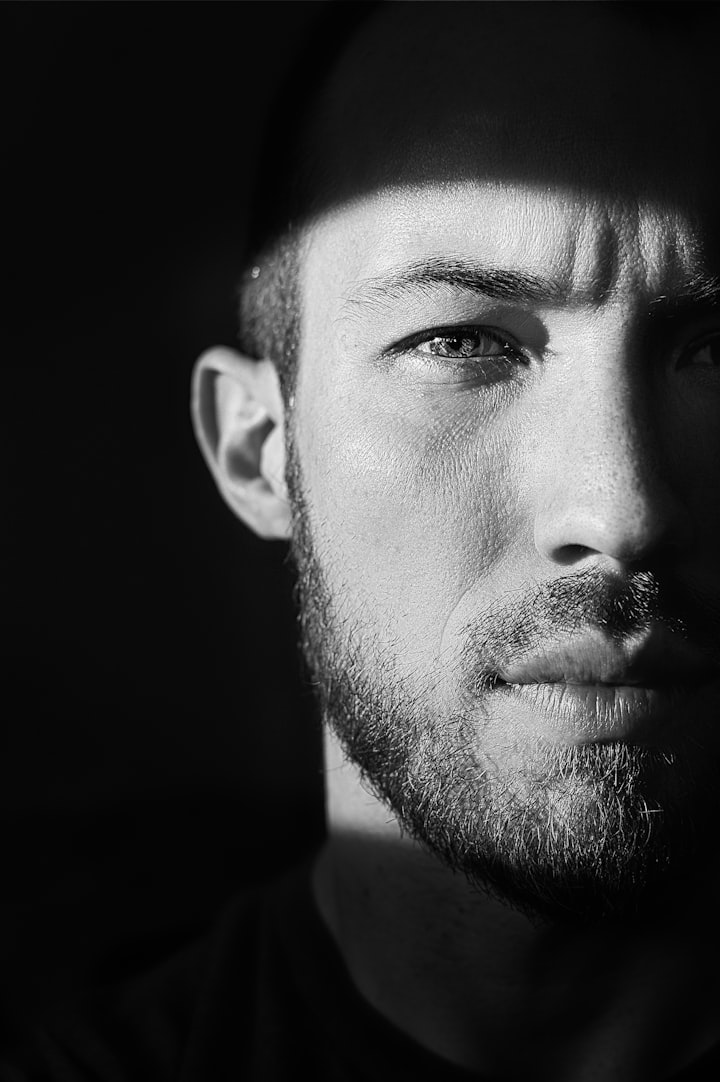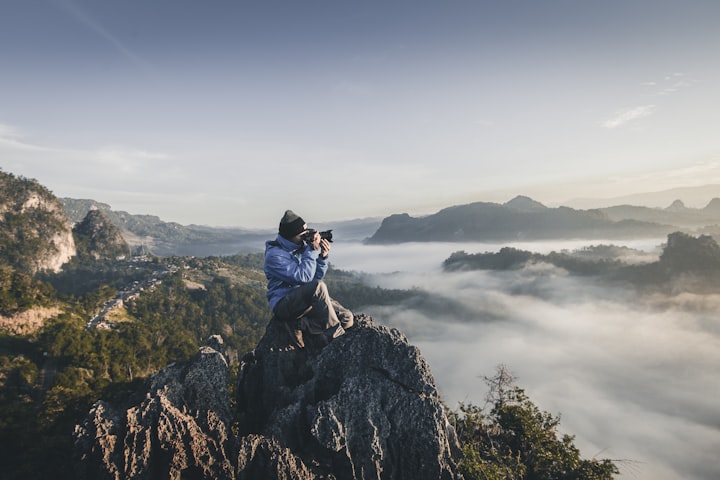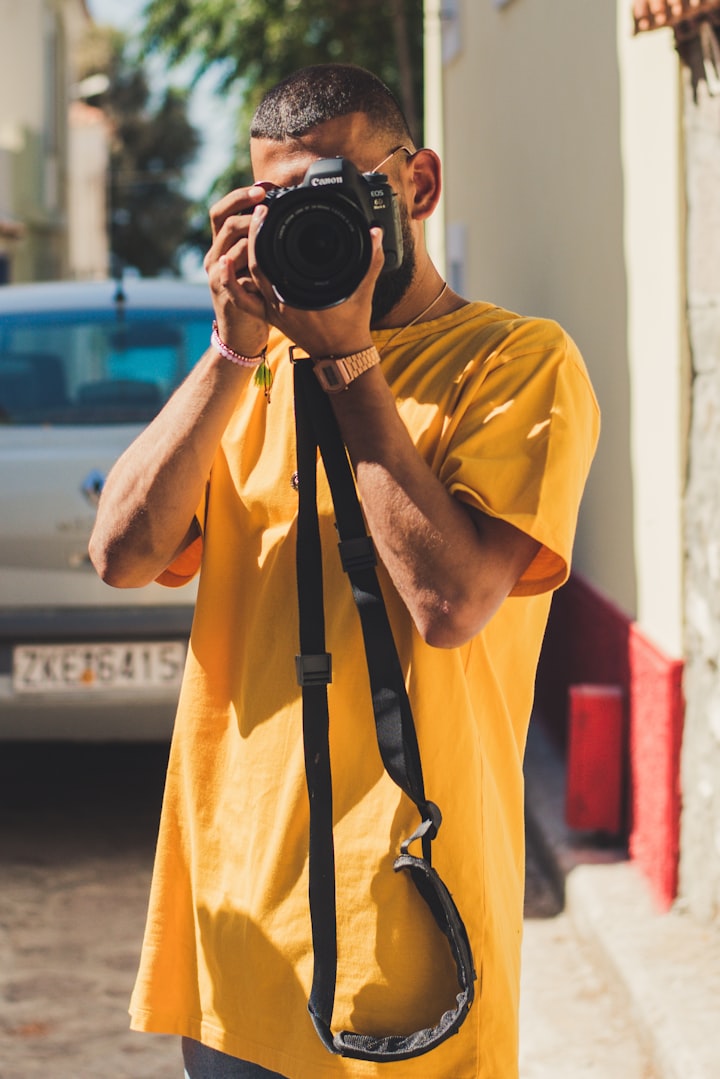Portrait Photography
"Capturing the Essence of Your Subject: The Art of Portrait Photography"

Are you ready to dive into the world of portrait photography? Buckle up and let's get started!
First things first, let's talk about the basics. You may be wondering, "What is portrait photography?" Well, my friend, it's a way of capturing a person's essence and personality through photography. It's all about making your subject feel comfortable and bringing out their true self in front of the camera.
But before you start snapping away, you need to understand some of the basic concepts of portrait photography. You need to know what makes a good portrait, what equipment you need, and what kind of settings and lighting work best.
Don't worry, we'll cover all of this and more in this chapter. By the end of it, you'll be well on your way to becoming a portrait photography pro.
So let's get started, shall we? Grab your camera and let's explore the fascinating world of portrait photography together.
Essential Gear for Portrait Photography: Cameras, Lenses, and Lighting
In this chapter, we'll dive into the essential equipment you'll need to take your portrait photography to the next level.
First up, let's talk cameras. While you can take portraits with just about any camera, a good quality camera will give you the control and flexibility you need to capture stunning images. You'll want a camera with a high resolution sensor and manual controls, so you can fine-tune your settings to get the perfect shot.
My Personal Recommendation: The Canon EOS R5
Next, let's talk lenses. The lens you choose can make or break your portrait, so it's important to choose wisely. A portrait lens should have a wide aperture (like f/1.8 or f/1.4) to create a shallow depth of field and blur the background, putting the focus on your subject. A 50mm or 85mm prime lens is a great choice for portraits.
Now, let's talk lighting. Good lighting is key to creating a beautiful portrait. You can use natural light, or you can use artificial lighting like a flash or studio lights. If you're shooting outdoors, try to shoot during the "golden hour" - the hour after sunrise or the hour before sunset - for soft, warm light. If you're shooting indoors, consider investing in a simple studio lighting setup.
And finally, don't forget about accessories! A tripod can help you keep your camera steady for sharp, clear images, and a reflector can bounce light back onto your subject to fill in shadows.
So there you have it - the essential gear you'll need for portrait photography. Now get out there and start shooting!
Mastering Composition: Techniques for Creating Stunning Portraits
Alright, my fellow portrait enthusiasts, it's time to talk about the art of composition. Because let's face it, even with the best gear in the world, a poorly composed portrait will fall flat.
Composition is all about arranging the elements in your frame in a way that is pleasing to the eye and draws the viewer's attention to your subject. One of the most basic and effective techniques is the rule of thirds. Imagine your frame is divided into a grid of nine equal parts - place your subject at one of the points where the lines intersect, and voila! Instantly more interesting.
Another technique is leading lines, which use lines within the frame to draw the viewer's eye towards your subject. This can be anything from a fence leading to a person, to the curve of a road leading to a landscape.
And then there's framing, which involves using objects within the frame to "frame" your subject and draw attention to them. This can be anything from a doorway to a tree branch.
But perhaps the most important element of composition is negative space - that is, the space around your subject. Giving your subject room to breathe can create a sense of balance and allow them to stand out more in the frame.
So there you have it, my friends. A few basic techniques to get you started on the path to mastering composition. Now go out there and create some stunning portraits!
Posing Techniques for Portraits: Making Your Subjects Look Their Best
Welcome to the world of posing, where we take regular human beings and transform them into supermodels! Well, maybe not quite, but you get the idea. Posing is all about finding the best angles and positions for your subject to make them look their absolute best.
First things first - relax your subject. A tense, stiff subject is not going to look good in any pose. Encourage them to take a deep breath, shake it out, and loosen up.
Next up, pay attention to body language. Encourage your subject to shift their weight onto their back leg, which creates a natural S-curve in the body and adds some dynamic interest. And speaking of curves, don't be afraid to have your subject turn slightly sideways to the camera, which can create a more flattering and slimming effect.
Another technique is to have your subject interact with their environment - whether that's leaning on a tree, sitting on a bench, or walking down a path. This can create a more natural and relaxed look.
And don't forget about the power of props! A hat, a scarf, a bouquet of flowers - these can all add interest and depth to your portraits.
Last but not least, pay attention to the details - such as hand placement and facial expressions. A small shift in hand position or a slight tilt of the head can make all the difference.
So go forth and pose your heart out, my fellow portrait enthusiasts! Remember, it's all about making your subject feel comfortable and confident, and finding the angles and positions that showcase their unique beauty.
Working with Natural Light: Capturing Portraits in Different Lighting Conditions
Ah, natural light - the fickle mistress of the photography world. One minute you're basking in the warm glow of a golden hour sunset, and the next you're cursing the harsh shadows of high noon. But fear not, dear reader, for with a little know-how and some creative problem-solving, you can capture stunning portraits in any lighting conditions.
First, let's talk about golden hour - that magical time of day just after sunrise and just before sunset, when the light is soft, warm, and oh-so-flattering. This is the time to embrace backlighting, which can create a dreamy halo effect around your subject. Or, if you're feeling daring, try shooting directly into the sun for a dramatic, silhouetted effect.
But what about midday sun, you ask? Fear not, for all is not lost. Look for areas of open shade, such as under trees or buildings, to avoid harsh shadows on your subject's face. Or, if you're feeling brave, embrace the shadows and create some moody, high-contrast images.
Cloudy days can also provide a beautiful soft light, perfect for capturing gentle, ethereal portraits. And don't forget about indoor lighting - experiment with different sources of light, such as lamps or window light, to create interesting and dynamic images.
Remember, it's all about being adaptable and creative in different lighting conditions. Embrace the challenges and have fun playing with light - after all, that's what makes portrait photography so magical.
Using Artificial Light: Creating Dramatic Portraits with Strobes and Modifiers
Artificial light - the superhero of the photography world. With the power to shape, mold, and transform any scene, it's no wonder that photographers turn to strobes and modifiers to create stunning and dramatic portraits.
First, let's talk about strobes. These powerful flashes of light can freeze motion, add drama, and bring out details in even the darkest of settings. But beware - with great power comes great responsibility. Be mindful of the intensity and direction of your strobe, or risk leaving your subject looking like a deer caught in headlights.
Modifiers are the sidekicks to your strobes, helping to soften, diffuse, or shape the light to your liking. Softboxes can create a flattering, even light for classic headshots, while umbrellas can add a touch of drama and texture. And don't forget about gels, which can add a pop of color and personality to your images.
But how do you actually use these tools to create stunning portraits? Start by experimenting with different setups and techniques, such as using a single light source for dramatic shadows, or using multiple lights to create a more complex scene. Play with distance and placement, and don't be afraid to try unconventional techniques - after all, the best portraits are often the most creative.
Remember, artificial light can be your secret weapon for creating stunning and unforgettable portraits. Embrace the power of strobes and modifiers, and let your creativity shine.
Tips for Photographing Children and Families: Capturing Candid Moments and Emotions
Children and Families - the holy grail of portrait photography. Capturing candid moments and authentic emotions can be a challenge, but with the right tips and tricks, you can create unforgettable images that will be cherished for years to come.
First things first - get down on their level. This means kneeling, sitting, or even lying on the ground to capture images from their perspective. Not only does this create a more engaging image, but it also helps to build a connection with your subjects.
Next, keep things playful and fun. Children have a short attention span, so keep the session moving and incorporate games or activities to keep them engaged. And don't forget to let them be themselves - capturing their unique personalities and quirks is what makes a portrait truly special.
When working with families, focus on capturing the dynamic between them. Encourage interaction, whether it's a group hug, a tickle fight, or a whispered secret. These genuine moments will create images that are full of emotion and personality.
And of course, be prepared for the unexpected. Children are unpredictable, and sometimes the best images come from those spontaneous moments - like when they start chasing each other around or make silly faces at the camera.
Remember, capturing candid moments and authentic emotions is all about building a connection with your subjects and creating a fun and relaxed atmosphere. With the right approach and a little bit of patience, you can create images that will be treasured for a lifetime.
Capturing Portraits on Location: Finding the Right Setting and Background
Welcome to the adventurous chapter on capturing portraits on location! If you're ready to pack your bags and head out to capture some amazing portraits, then you're in the right place.
First off, let's talk about finding the perfect location. It's not just about finding a pretty background, but also about finding a location that complements your subject and their personality. Are they an outdoorsy person who loves hiking and camping? Then perhaps a mountain or forest setting would be perfect. Are they a city slicker who loves the hustle and bustle of urban life? Then an urban setting with skyscrapers and city streets would be ideal.
Next up, let's talk about the challenges of working on location. You may have to deal with changing lighting conditions, unexpected weather, and distracting background elements. But don't let these challenges deter you! With a little bit of creativity and adaptability, you can turn any location into a stunning portrait backdrop.
Now, let's discuss some tips and tricks for working on location. One key tip is to always be aware of your surroundings and look for interesting elements that can add depth and dimension to your portraits. Maybe there's a unique texture on a nearby wall, or a colorful door that would make a great backdrop. Don't be afraid to experiment and try different angles and compositions.
Finally, remember that the location should never overpower the subject. Your subject should always be the focal point of the portrait, so use the location to enhance their personality and bring out their best features.
With these tips in mind, you're ready to hit the road and capture some amazing portraits on location. Happy shooting!
Post-Processing Your Portraits: Editing Techniques for Enhancing Your Images
Ah, the sweet satisfaction of taking a great portrait shot! But what comes next? The post-processing stage, of course!
In this chapter, we'll explore the art of editing your portrait shots to give them that extra punch and wow-factor. With the right tools and techniques, you can transform your images from good to breathtaking.
First off, let's talk about software. There are plenty of options out there, from free programs like GIMP to industry-standard tools like Adobe Photoshop and Lightroom. Experiment and find what works best for you.
Now onto the good stuff - editing techniques! First things first, let's talk about exposure. Sometimes, you'll find that your shot is a bit under or over-exposed, which can ruin an otherwise great image. Fear not, for adjusting exposure is a breeze with software. Increase the brightness and contrast to add some pop, or decrease it for a more subdued and moody effect.
Next up, we have color correction. Sometimes, the lighting conditions in which we shoot can give our images a weird color cast. Maybe the subject looks a little too yellow or blue. No problem! Adjust the white balance in post-processing to bring back a more natural skin tone.
Don't forget about skin retouching. We all have blemishes and imperfections on our skin, but that doesn't mean they have to be in our photos forever. Use the healing brush tool to remove any unwanted spots or lines. Just be careful not to go overboard and make your subject look plastic!
Finally, we have creative editing techniques. This is where you can let your imagination run wild. Add a vignette to draw attention to your subject's face, or blur the background to create a dreamy effect. Try playing around with color grading to add a unique look and feel to your images.
Remember, the key to post-processing is to enhance your image, not completely change it. Use your editing skills to bring out the best in your portrait shots, and don't be afraid to experiment with different techniques. With practice, you'll develop your own style and be able to create portraits that are truly one-of-a-kind.
Building a Portfolio and Marketing Your Portrait Photography Business
Ok, so now the business side of things! This chapter is all about taking your portrait photography to the next level and making a name for yourself. Let's dive in!
You've honed your portrait photography skills and are now ready to take on the world. But how do you showcase your talent and get your name out there? It's all about building a portfolio and marketing your business.
Your portfolio is a collection of your best work that showcases your unique style and vision. It's your chance to make a first impression and show potential clients what you're capable of. Start by selecting your best images and organizing them in a visually appealing way. Remember, quality over quantity.
Now that you have a killer portfolio, it's time to get the word out. Social media is a great way to reach a large audience, so create a business page on platforms such as Instagram and Facebook. Share your work regularly and engage with your followers by responding to comments and messages.
Networking is another essential aspect of marketing your business. Attend industry events and connect with other photographers, models, and makeup artists. You never know who might refer you to their clients or collaborate with you on a project.
Offering specials or referral incentives is another way to attract new clients. Make sure your website is user-friendly and showcases your work and services. Don't forget to include your contact information and a brief bio about yourself.
Conclusion:
Building a successful portrait photography business takes hard work and dedication, but it's also incredibly rewarding. With a strong portfolio and effective marketing strategy, you can turn your passion into a thriving career. Remember, never stop learning and improving, and always stay true to your unique style and vision. Good luck!
Why I think the Canon EOS R5 is such a great Portrait Camera…
The Canon EOS R5 is a beast of a camera that packs a powerful punch when it comes to portraiture photography. First and foremost, its 45-megapixel full-frame sensor allows for stunning image quality with incredible detail and color accuracy. This means that your portraits will have a level of sharpness and clarity that will make your subjects look like they're jumping off the screen.
Another great feature of the Canon EOS R5 is its autofocus system. With an impressive 1053 autofocus points, this camera is able to track and focus on your subject's face and eyes with incredible speed and accuracy. This is especially useful in portrait photography, where the eyes are often the main focal point.
But wait, there's more! The Canon EOS R5 also has a built-in image stabilization system, which means that you'll be able to shoot handheld at slower shutter speeds without worrying about camera shake. This is particularly useful when shooting portraits in low-light situations or when you're trying to create a specific artistic effect with a slower shutter speed.
Finally, the Canon EOS R5 has a range of customizable settings and features that allow you to really fine-tune your portrait photography experience. Whether you're adjusting the color balance, tweaking the exposure settings, or experimenting with different lenses and filters, this camera gives you the flexibility to create truly stunning portraits that will leave a lasting impression on your audience. Overall, the Canon EOS R5 is an exceptional camera for anyone who takes their portrait photography seriously and wants to create images that truly stand out from the crowd.
Click here to see the very best prices for the Canon EOS R5
Please note that this link is an affiliate link, which means I may earn a small commission if you make a purchase through it.
About the Creator
Chris Jones
Experience You Can't Get from a Book: The Best of Business, Sales, Marketing, Bloging, and Earning Money Online. Please feel free to contact me... [email protected] If it matters I'm based in the UK, so I have nice manners, Thanks






Comments
There are no comments for this story
Be the first to respond and start the conversation.